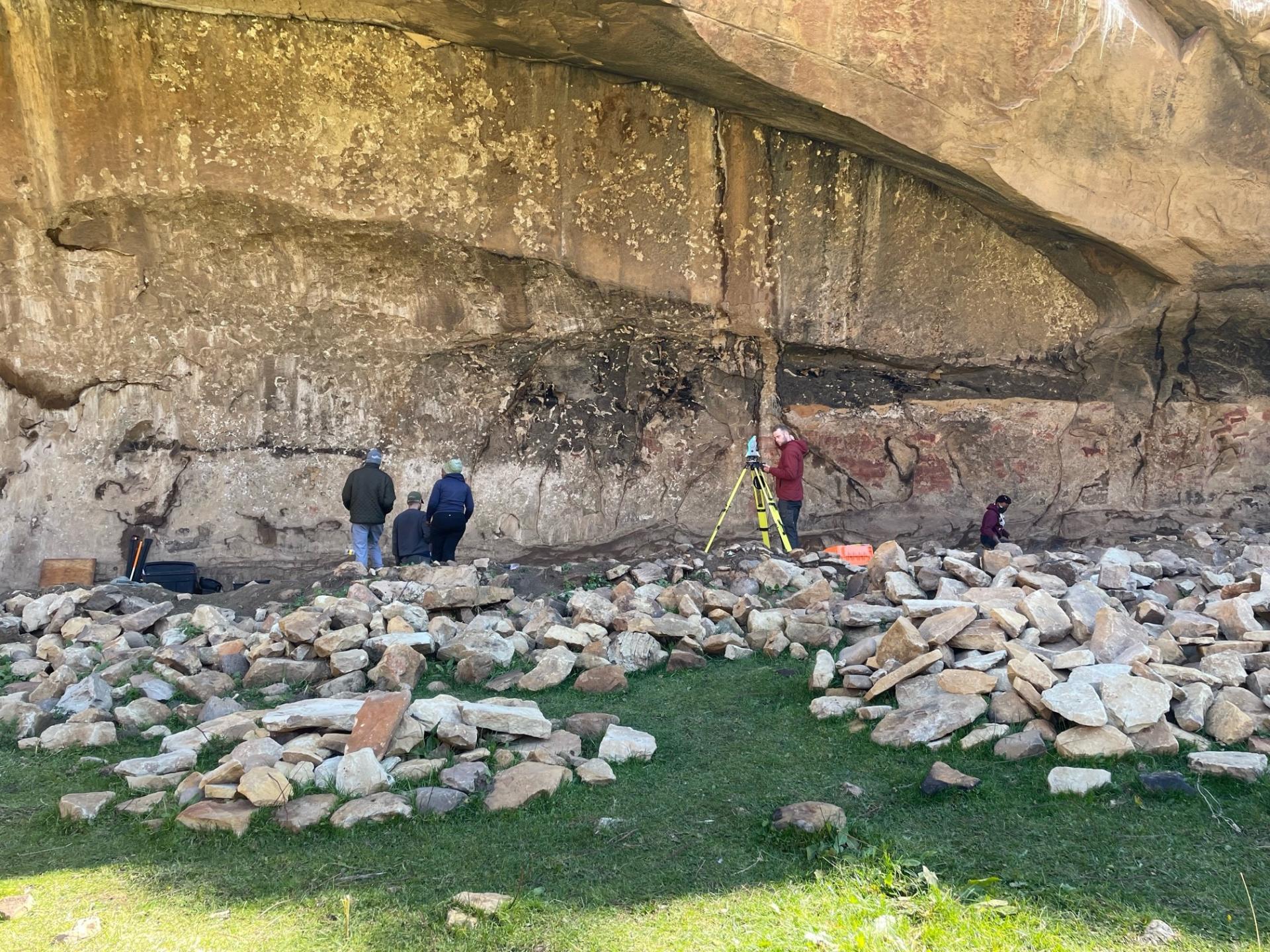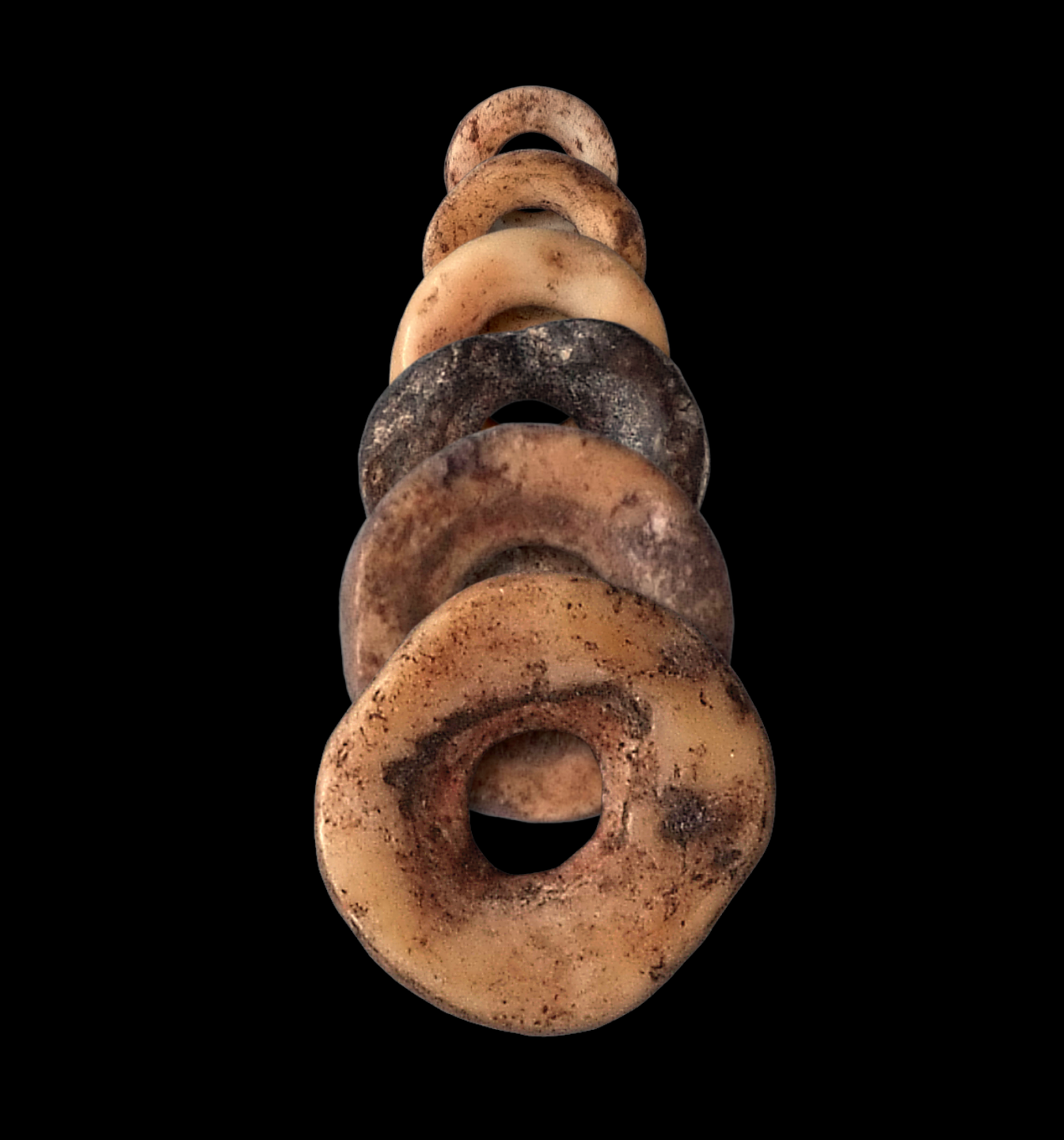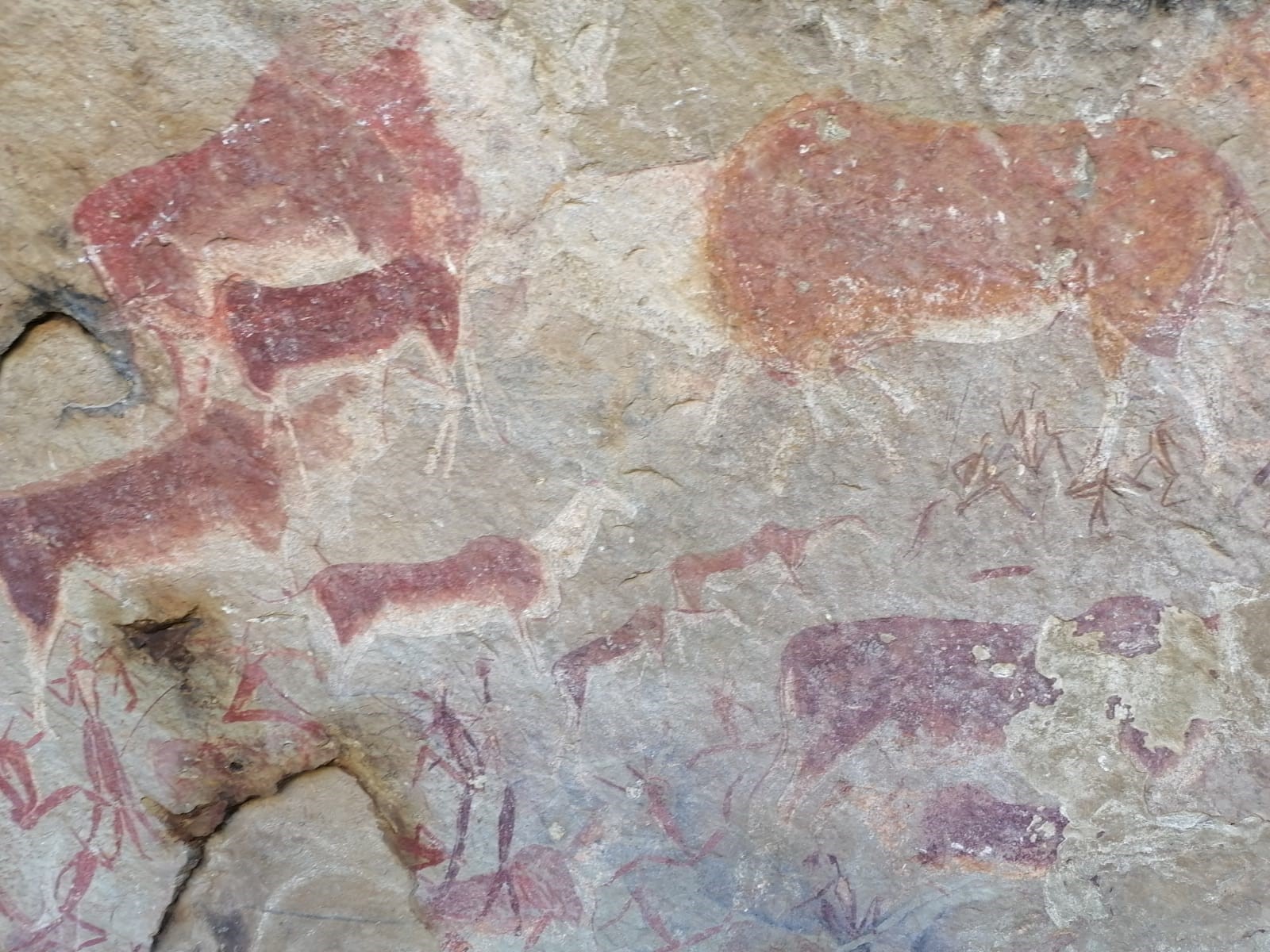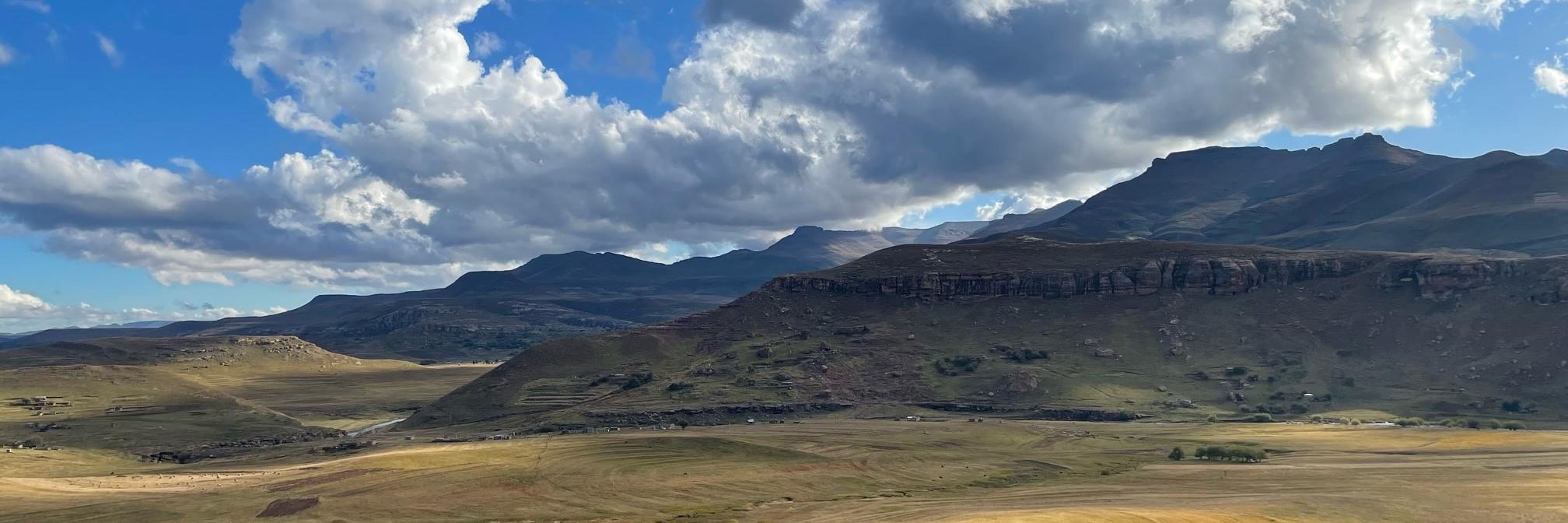Archaeologists from University of Toronto Scarborough are part of a team excavating a rockshelter in Lesotho that aims to shed light on the social innovations that allowed humans in the Stone Age to settle in inhospitable environments.
Prof. Genevieve Dewar, Prof. Michael Schillaci and PhD student Michael Obie recently returned from the field in the Maloti-Drakensberg mountains of Lesotho, where they were excavating at a rockshelter called Ha Soloja. Prof. Dewar is co-director of the project along with Prof. Brian Stewart of University of Michigan.

The mountains around Ha Soloja are dry and rocky, a challenging place to live for even modern humans. Yet 40,000 years ago in the Pleistocene period, when temperatures were lower, we see human habitation in rockshelters across the region. These were hunter-gatherer-fisher people, probably the ancestors of the Khoisan-speaking bushmen who lived in the mountains.
“It’s a period of rapid climate change, a period of flux,” says Prof. Dewar. “We see people up in mountains when there’s very little evidence for them at the coast. People come and go, and so we think people are coming up here when it’s much drier everywhere else, they are coming up to the mountains to get access to fresh water and of course following game. It’s kind of a refugia where people were able to survive.”
The excavation is part of a research project called Adaptations to Marginal Environments in the Middle Stone Age, which examines the adaptations – both social and technological – that allowed humans to adapt to difficult landscapes. The project studies sites at two ends of the Orange River, at Namaqualand in South Africa and the Lesotho Highlands. The river is important because it runs almost the length of the subcontinent and access to fresh water was crucial for the development of human communities.

“We’re looking for evidence of human adaptive plasticity,” said Prof. Dewar “The ability to move into a region and deal with the difficult aspects of that area using social and technological innovations. Ultimately, it’s one of the features that allowed Homo Sapiens to migrate out of Africa so quickly. They’d already developed a range of such adaptive behaviours within the diverse habitats of Africa. And so, we’re specifically looking at difficult, marginal environments which are places that have unpredictable resources. We think it’s there in these difficult environments that people develop technological and or social innovations in order to adapt to that region.”
Key to this thesis is the use of ostrich eggshells. Ostrich eggshells can be a source of food and represent both a technological and a social innovation – the shell can be used as a flask to carry water, allowing movement into dry lands, then the fragments can be drilled and threaded onto a string to make beads. These beads are mostly made in drylands where ostriches live, but thanks to Strontium analysis, the team can tell that the beads have ended up at the top of the mountains 350-900 km away.
How did the beads get there? It’s not clear whether they were brought by people travelling from one site to another, or more likely by hand to hand trade. The best model is that the ostrich eggshell beads are more than personal ornamentation reflecting group identity, but instead they are a kind of social currency. Ethnographic research by Polly Weissner has shown that the Ju/’hoãnsi in the Kalahari use extensive social networks based on delayed balanced reciprocity called hxaro. They gift ostrich eggshell beads to members of an extended kin or affinal kin group that provides individuals and families with alternative residences and foraging possibilities when their territories become scarce. The beads the team measured in the highlands of Lesotho reflect this large exchange network at 33,000 years ago, one that reached beyond the macroband and across hundreds of kilometers.

“Families would have trading partners and they would trade things like ostrich eggshell beads to create a relationship of delayed reciprocity,” noted Prof. Dewar. “So, if I was a trading partner with my cousin who lives 300 km away in a different environment, when my region fails, then I could go and stay with my cousin because we’ve established this social relationship.”
The excavations at Ha Soloja have uncovered up a number of stone tools, as well as evidence of the making of tools. However, they haven’t yet located any beads. This could be due to the differential use of space, the acidity of the soil, flooding of the rockshelter, or perhaps the people living there were not part of the group using these beads.
Further excavations later in the year may yield answers to some of these questions.
“The site has some of the oldest evidence for high altitude living,” said Prof. Dewar. “I fully expect the base of this deposit to be in the 80-90,000 year range if not more.”
The project’s most recent article findings are summarized here.
